Abbey of St Gall
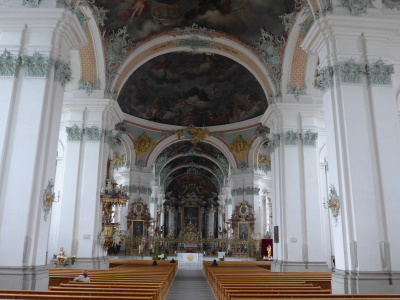
The Abbey of St Gall had a great influence on the development of monastic architecture and is considered to be a typical example of a large Benedictine monastery.
It was during the abbacy of Gozbert (816-837) that the so-called Golden Age of St. Gall began. Most impressive remains of this period are the Convent's library and archive, containing 150.000 books including numerous treasures.
Community Perspective: The Library is the unmissable part, the Abbey’s exterior is quite plain.
Agra Fort

Agra Fort is a highlight in Indo-Islamic Mughal art and architecture.
The fortress enclosed the imperial city of the Mughal rulers, who ruled from there until 1638. Entered by monumental gates, it holds a large number of palaces and two white marble mosques. The original complex was built by Emperor Akbar in red sandstone; major monuments executed in marble were added by Shah Jahan in the 17th century.
Community Perspective: It lies close to the Taj Mahal and is better visited first, as otherwise, it can only disappoint. Visit it for an insight into the lifestyle of the Mughal rulers.
Ajanta Caves
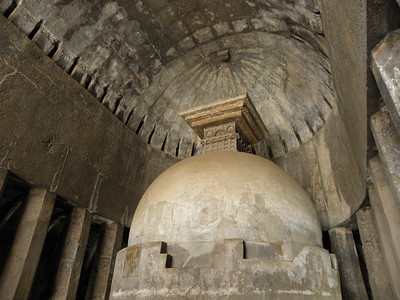
The Ajanta Caves are rock-cut cave monuments that contain Buddhist religious paintings and sculptures.
The 30 caves are excavated out of a vertical cliff. They date from two stages: the Satavahana dynasty (2nd – 1st century BCE, with austere caves) and the Vakataka dynasty (5th to 6th century CE, with exquisite mural paintings). The complex consists of several viharas (monastic halls of residence) and chaitya-grihas (stupa monument halls)
Community Perspective: In the “competition” with nearby Ellora, Ajanta scores points on its beautiful setting in a horseshoe bend and the quality of the painted interiors (Ellora however does have better architecture and sculptures). Cave 1, the closest to the entrance/exit, is the most beautiful of the Ajanta Caves.
Angra do Heroismo
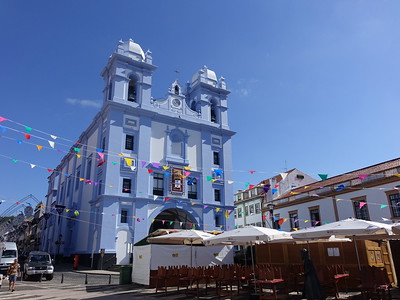
The "Central Zone of the Town of Angra do Heroismo in the Azores" represents the age of maritime exploration of the Earth.
The town has been shaped by its role as a port-of-call for ships between Europe and America from the 15th-19th centuries. Its urban model was adapted to the prevailing winds. Among its principal buildings are the Sao Sebastiao and Sao Filipe fortresses, the Santissimo Salvador cathedral and the Franciscan and Jesuit convents.
Community Perspective: there is a clearly sign-posted UNESCO WHS trail covering 24 locations of interest, which can be easily covered in a day although walking Angra’s streets is exhausting due to its steep ascents. The colourful facades are its highlights, but there isn’t a real port atmosphere anymore.
Belem
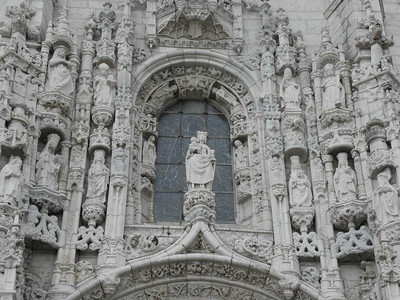
The Monastery of the Hieronymites and Tower of Belém in Lisbon represent the role of this harbour in the Portuguese Age of Discovery.
The two late 15th and early 16th century historical buildings at the shore of the Tagus were built on orders of King Manuel I. The monastery’s church became a house of prayer for seamen, and later was turned into the burial place for Portuguese royalty; the tombs of Vasco da Gama and Luís de Camões are also here. The nearby Tower of Belém commemorated the expedition of Da Gama and was part of the defense system of Lisbon.
Community Perspective: located in “one of Europe’s best capitals”, the monastery is a real gem of Lisbon built in the exuberant Manueline style. The best views of both the monastery and the tower can be enjoyed from the top of the nearby Monument to the Discoveries. Be aware that it all can be crowded with tourists.
Benedictine Convent of St. John
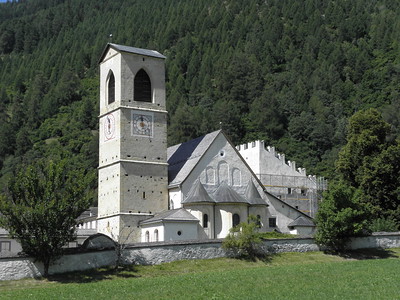
The Benedictine Convent of St. John at Müstair is an ancient monastery with an exceptionally well-preserved heritage of Carolingian art.
The murals depicting scenes from the Old and New Testament date from around 800 CE, and were uncovered during 20th century restoration works. Along with it were some Romanesque frescoes from the 1160s. The abbey was located along the Val Müstair pass over the Alps from Italy and was fortified to allow it to control the pass.
Community Perspective: People enjoy “the beautiful sweep and tranquility of the valley and the perfection, beauty and clarity of the frescoes in this intimate church”.
Comoé National Park
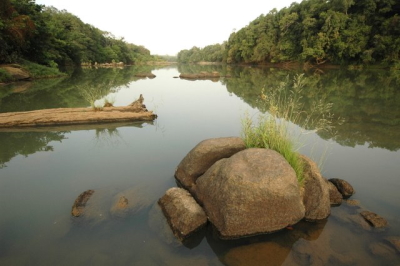
Comoé National Park centered around the Comoé River has a high diversity of plant and bird life.
The park is one of the largest protected areas in West Africa and covers a transitional zone between the forest and the savanna, with habitats such as fluvial forests and riparian grasslands. It is home to a wide diversity of wildlife, including 500 bird species, three species of crocodiles, plus chimpanzee, African wild dog and elephant.
Community Perspective: “a site only for the very committed wild-life fan (or the WHS completist)”. Iain visited in 1995 and found neither the landscape nor the vegetation particularly attractive. Anthony had a disappointing visit in 2017: he found a shut-down ranger station and swarms of tse tse flies, and the chimps hadn’t been seen in a decade.
Convent of Christ in Tomar
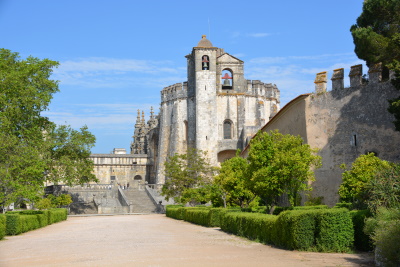
The Convent of Christ in Tomar symbolizes both the Reconquest and the Age of Exploration.
The fortified convent was founded in 1160 on land given by the Portuguese King to the Knights Templar, in return for their support against the Moors. The centrepiece Rotunda dates from this period. In the 14th century they transformed into the Order of Christ, which would undertake an important role in Portuguese overseas expansion in the 15th and 16th centuries. They added various elements, including Gothic cloisters and the Manueline church.
Community Perspective: mystical and religious, with an unbelievable architectural richness. It warrants several hours of your time. Highlights include the octagon with its beautiful murals, the west façade of the church with the famous Manueline window and the Great Cloister with four spiral staircases.
Cuzco
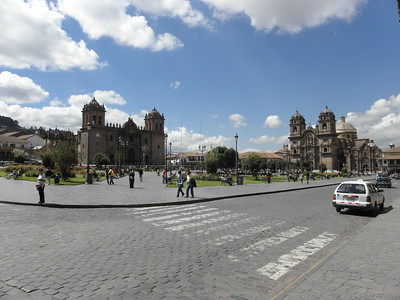
The City of Cuzco combines the cultures of the Inca capital and the Hispanic colony.
The Incas developed the city in the late 15th century for their imperial government that ruled over much of the Andes. They aimed to create an ideal town, with administrative and religious functions in the center and agriculture and industrial production in the outlying areas. The first Spaniards arrived in the city in 1533. They constructed their own buildings (catholic churches, mansions) on the demolished walls of the Inca buildings, but left the city layout intact. These buildings are of Spanish influence with a mix of Inca architecture.
Community Perspective: the “sense of history and the past resonates strongly as you walk the streets of Cuzco”. It’s also a major tourist hub. As it lies at an altitude of 3,400m: take it easy.
Ellora Caves
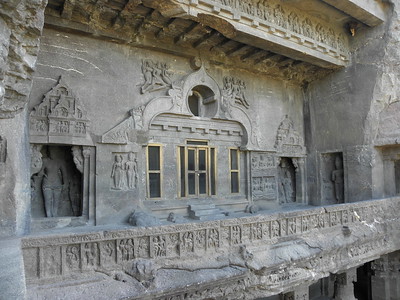
The Ellora Caves represent the epitome of Indian rock-cut architecture.
The 35 "caves" - actually structures excavated out of the vertical hill face - comprise Buddhist, Hindu and Jain temples and monasteries. The 12 Buddhist (caves 1-12), 17 Hindu (caves 13-29) and 5 Jain caves (caves 30-34), built in proximity, demonstrate the religious harmony prevalent during this period of Indian history (6th-12th century CE). The Kailasa temple (cave 16) especially stands out as it is the world’s largest monolithic temple and is decorated with fine sculptures and paintings.
Community Perspective: In the “competition” with nearby Ajanta, Ellora scores points on its architectural engineering and sculptures (Ajanta however has a more beautiful setting and more painted interiors). It’s of the “worth a journey” category and the Kailasa temple could be a WHS on its own.
Great Smoky Mountains
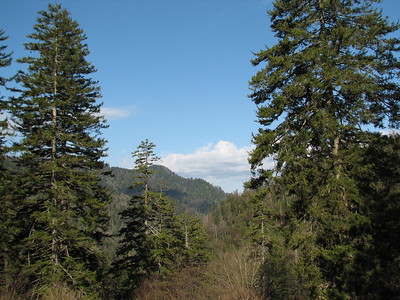
Great Smoky Mountains National Park comprises a natural landscape of undisturbed, scenic forests.
They hold flora and fauna species that survived the Pleistocene Ice Ages and are rarely found in temperate zones elsewhere. It is floristically very diverse, with fourteen major forest types and 105 native tree species. Wildlife includes the black bear and the white-tailed deer, and the park has the world’s greatest diversity of salamander species.
Community Perspective: one of the most visited sites overall due to the close proximity to the eastern cities, it is best done over 2 days and on weekdays. Still, it is quite pristine and there are good opportunities for hiking. Three out of the six reviewers spotted a black bear.
Gulf of Porto
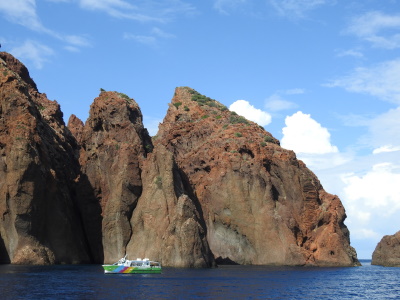
Gulf of Porto: Calanche of Piana, Gulf of Girolata, Scandola Reserve is a natural area with dramatic geological landforms and wealthy undersea life.
The coastline is noted for its red cliffs, some 900 metres high, sand beaches, and headlands. The sheer cliffs of the Gulf contain many grottos and are flanked by numerous stacks and almost inaccessible islets and coves. It is the habitat of the rare osprey, peregrine falcons and bearded vultures.
Community Perspective: This coastal area of Corsica is best seen from the sea, see Els’s review of what you may expect from such a boat tour. Jay visited the terrestrial part of the Calanche of Piana on foot.
Jesuit Missions of the Guaranis
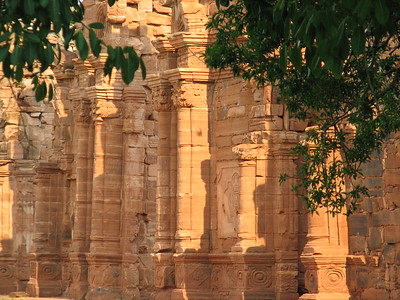
The Jesuit Missions of the Guaranis are the archeological remains of towns created by the Jesuit Order.
The towns existed between 1609 and 1818, and aimed to socially, culturally and religiously elevate the local Guarani communities. They also provided protection and economic stability. These so-called reducciones included agricultural lands such as mate plantations as well.
Community Perspective: San Ignacio Mini in Argentina is its best-known component (it even comes with a sound-and-light show), while São Miguel das Missões has a remarkable façade. Nan and Timonator speak highly of Loreto in Argentina.
La Fortaleza and San Juan

La Fortaleza and San Juan National Historic Site in Puerto Rico comprise a defense system that played a strategic role in the Spanish colonization of America.
The fortifications protecting the city and the Bay of San Juan show the adaption of European designs to a Caribbean context. La Fortaleza nowadays serves as the seat and residence of the Governor of Puerto Rico. San Juan National Historic Site includes the forts of San Cristóbal, San Felipe del Morro, and San Juan de la Cruz, plus bastions, powder houses, and three fourths of the city wall.
Community Perspective: the fortresses of San Cristóbal and San Felipe del Morro are enormous and the highlights of the site, and you can easily spend several hours here.
Machu Picchu
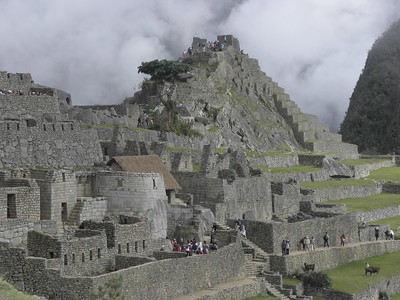
The History Sanctuary of Machu Picchu is the most renowned archeological site from the Inca Civilization.
The stunning complex is located 2,430 meters above sea level, on a mountain ridge above the Urubamba Valley, between the two mountains Machu Picchu and Huayna Picchu. The Inca artistically "sculpted" the mountain and built a well-planned sanctuary in the classical Inca style, with polished dry-stone walls. Features of Inca archtecture that can be seen are platforms, ramps, stairways, trapezoidal windows and doors.
Community Perspective: the cost is high and the the access regulations can be frustrating (it makes no sense to repeat them here as they change frequently) - but do not let horror stories deter you from visiting this magnificent site.
Monastery of Batalha
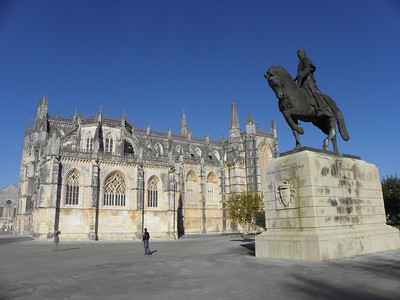
The Monastery of Batalha is a Dominican convent that is a masterpiece of Gothic and Manueline art.
Its late Gothic architecture is intermingled with the Manueline style. The ornate convent has been put up in limestone, with a profusion of gables, spires, pinnacles and buttresses. The Monastery's Founder's Chapel became the first royal pantheon in Portugal.
Community Perspective: “Over-the-top” in its Manueline decorations. The Royal Cloister and Chapterhouse are among its highlights.
Nancy
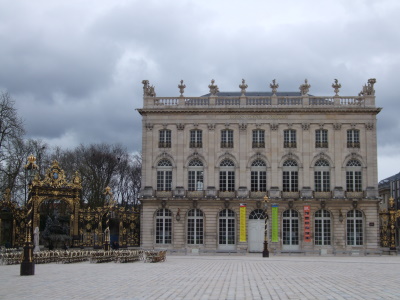
Place Stanislas, Place de la Carrière, and Place d'Alliance in Nancy are 18th-century works of urban planning ordered by an enlightened monarch.
The three squares and the surrounding monuments were developed under the patronage of the Duke of Lorraine, Stanislaw Leszczynsk. The richly decorated squares held a public function: the Opera, the Town Hall, Courts of Law, a library and a botanical garden can be accessed from here.
Community Perspective: Maybe not a world-class sight, but the place has charm. Place Stanislas is the highlight of the three squares.
Nessebar
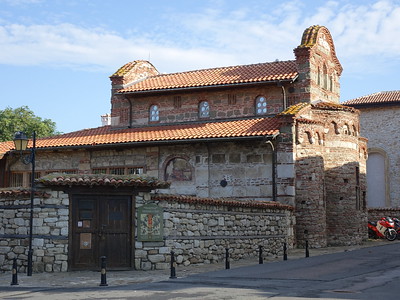
The Ancient City of Nessebar located at a peninsula in the Black Sea holds over 3,000 years of history,
Nessebar has Thracian origins and later became an important Greek colony and Byzantine settlement. The Greek colonists left an acropolis, a temple of Apollo and an agora. The town has been a spiritual centre of Christianity for 1,000 years. This is reflected in its medieval religious architecture with rich plastic and polychrome decoration on its facades.
Community Perspective: Nessebar’s attraction nowadays lies mostly with its Byzantine churches - there is virtually nothing left of the other periods of its existence. The town is usually flooded by tourists during the day as it lies close to beach resorts.
Old City of Berne
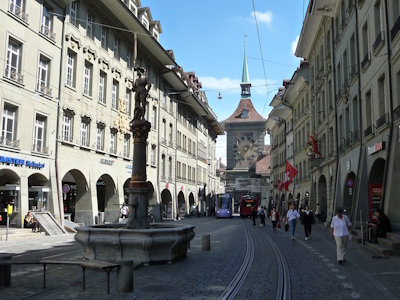
The Old City of Berne represents the adaptation of a medieval city into a modern capital.
After a fire in 1405, which almost completely destroyed the wooden-built town, the houses were rebuilt of sandstone. The medieval structure of the city originating from that time has remained unchanged up to the present day. Later, monumental fountains, the cathedral, patrician houses and large public monuments were added to the cityscape.
Community Perspective: It’s pleasant enough but nothing to write home about. The clock tower tour is the recommended thing to do.
Pilgrimage Church of Wies
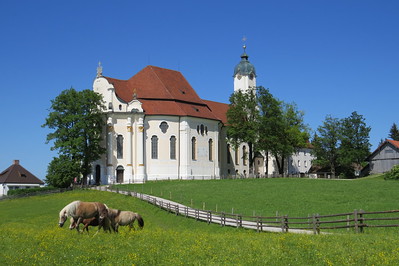
The Pilgrimage Church of Wies is considered a masterpiece of Bavarian Rococo.
In 1738 a miracle appeared in this Alpine valley: tears were seen on a dilapidated wooden figure of Christ. Pilgrims became so numerous that a proper sanctuary was needed. The oval church was decorated with exuberant stucco work and frescoes in lively colours by the brothers Johann Baptist and Dominikus Zimmermann.
Community Perspective: The interior is in a very fine condition and may be awe-inspiring or not (depending on how much you enjoy rococo). Be prepared to wait (church services of all kinds take precedence over tourists) and take your time inside. The church lies in a remote location in the Bavarian countryside, but visitors arrive here by the busload.
Pirin National Park
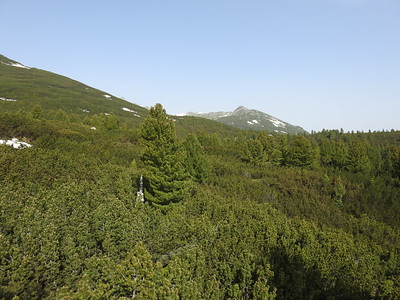
Pirin National Park is renowned for its remote mountain scenery and glacial geomorphology.
The park comprises the undeveloped part of the Pirin mountain range, which is covered with alpine meadows and coniferous forests. Its glacial features include cirques, deep valleys and over 70 glacial lakes. The park is also noted for its variety in flora, including the Edelweiss, 300 species of mosses and algae.
Community Perspective: This is close to a major ski area (that’s essentially the buffer zone), and even when hiking in Spring you will encounter snow on or near the trails (see the reviews of Nan and Els). Solivagant has summarized its qualities nicely: "It contains attractive, if unremarkable, mountain scenery which will provide a pleasant escape from civilisation and interesting hiking opportunities.", although the many glacial lakes must be given special mention (Hubert visited several of them).
Rila Monastery
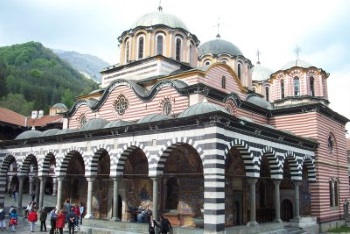
The Rila Monastery is a symbol of the 19th-century Bulgarian Renaissance.
The monastery in the remote Rila Mountains has its origins in the 10th century and had a strong influence on the Eastern Orthodox world in the following centuries. A fire in 1833 destroyed almost all buildings, which were made out of wood. The buildings were swiftly restored by Bulgarian craftsmen and got their current appearance.
Community Perspective: The setting of the main monastery is awe-inspiring and the frescoes are colourful. The four related sites so far have been mostly unreviewed, although Nan managed to hike to Saint Ivan’s cave. He also has provided public transport tips.
Saint-Savin sur Gartempe
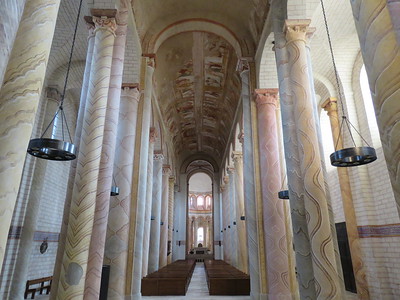
The Abbey Church of Saint-Savin sur Gartempe is an 11th-century Romanesque church noted for its well-preserved mural paintings.
These painted biblical narratives date from the late 11th, and early 12th centuries, and have given the church the nickname of "Romanesque Sistine Chapel". Below the church is the Crypt of the legendary martyr brothers St Savin and St Cyprian, also painted with murals about the lives of these two saints.
Community Perspective: The murals are the clear highlight (although the pastel-coloured columns are noteworthy as well), and they have been very well preserved, cleaned and restored. The comparison with the Sistine Chapel seems overblown, reviewers find the murals more like those at Reichenau or the Vall de Boi.
Sangay National Park
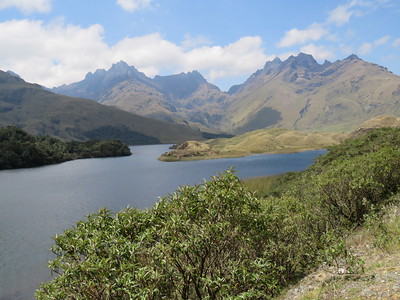
Sangay National Park contains two active volcanoes (Tungurahua and Sangay) and ecosystems ranging from tropical rainforests to glaciers.
Volcanic ash has created fertile soil, which has led to over 3,000 species of flowering plants in the park. It also contains one of the largest areas of páramo (alpine tundra) occurring in Ecuador, with plant species adapted to the cold climatic circumstances. Over 400 bird species inhabit the Park, and it comprises two Endemic Bird Areas. It is also home to the endangered spectacled bear and mountain tapir (both only found in the Northern Andes).
Community Perspective: the best way to see it is by driving down the controversial Guamote-Macas road. Be aware that it can be cold, wet and cloudy out there.
Srebarna Nature Reserve
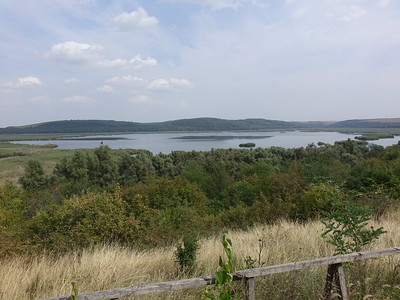
Srebarna Nature Reserve is a lake and wetland habitat on the bird migration route between Europe and Africa.
It comprises Lake Srebarna and its surroundings, which are located on the west bank of the Danube River. It is home to some 180 bird species, both breeding and migrating. Among the most interesting waterfowl are the Dalmatian Pelican, Pygmy Cormorant, Great White Egret, Glossy Ibis and Spoonbill.
Community Perspective: It is very similar in scenery and bird list to the Danube Delta, less than 200km away. Near the lake lies a small visitor center / museum, and from the surrounding hills you can observe the birdlife. Tsunami managed to visit on public transport, while Nan and Els entered during the 2018 WH Community Meeting, where they were educated by birder Peter and shocked by the upkeep. Clyde has provided some birding tips.
Taj Mahal
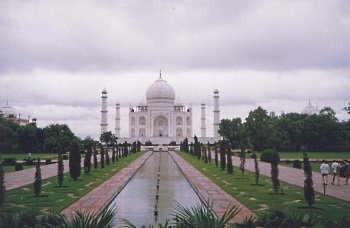
The Taj Mahal is an Indo-Islamic mausoleum with unique aesthetic qualities.
It was built in the 17th century as a tomb for the favourite wife of Mughal emperor Shah Jahan. The building in white marble shows perfect symmetry. Innovative also was its position at the end of the garden, giving perspective to the views of the monument, and the four free-standing minarets. Situated on the banks of the Yamuna River, the walled complex further includes two mosques and an imposing gateway.
Community Perspective: “some sites are so iconic, there seems to be nothing more one can add”. Nan however “felt a sort of emptiness creeping up”.
Talamanca Range-La Amistad Reserves
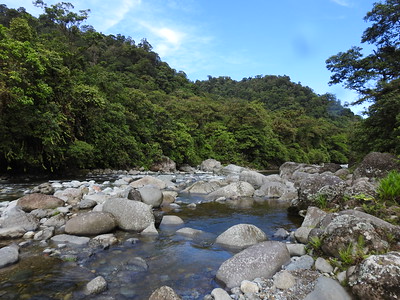
Talamanca Range-La Amistad Reserves/La Amistad National Park comprises a large mountain range covered with dense forests and marks of glacial activity.
Both the high mountains, the glacial features such as cirques and lakes and the natural forests are unique to Central America. It is also a land bridge connecting animal and plant species from North and South America. This is a vast contiguous and transboundary site comprising 8 parks: Barbilla, Chirripó, Hitoy Cerere, La Amistad (Costa Rica), La Amistad (Panama), Las Tablas, Rio Macho and Tapantí-Macizo de la Muerte.
Community Perspective: It is quite hard to gain deep access to any of these parks; they are best for hiking and birding. In Costa Rica, Anthony visited La Amistad, Esteban Chirripo National Park, and Els Tapantí-Macizo de la Muerte. Jarek covered the Las Nubes section of La Amistad on the Panama side.
Vallée de Mai
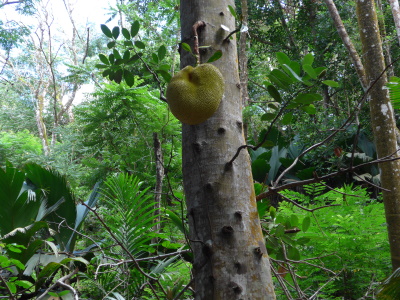
The Vallée de Mai Nature Reserve protects a scenic palm forest that is dominated by the endemic coco de mer.
The coco de mer has the largest seeds of any plant in the world. Also unique to the Reserve is its wildlife, including the rare Seychelles Black Parrot which is restricted to Praslin Island. The forest is relatively pristine and has remained largely unchanged since Prehistory. Five other species of native palms can be found there as well.
Community Perspective: “The rather anatomically correct male and female Coco de Mer palms are the real stars of the show” according to Ben, while Solivagant found it “magically primeval – cool and deep green with the sights and sound of running water and bird calls echoing through the shadows!” Birder Clyde suggests visiting early in the morning on weekdays to be able to spot several indigenous birds.
Wood Buffalo National Park

Wood Buffalo National Park comprises the largest example of a Great Plains-Boreal grassland ecosystem and it holds the world's largest herd of Wood Bison.
The huge park includes grasslands, boreal forests, a large inland delta, salt plains and gypsum karst. Next to the estimated ca. 5,000 Wood Bison that live here, it is also an important nesting site of the endangered whooping crane.
Community Perspective: it takes an effort to get there by car, some 14 hours from Edmonton and 17 hours from Jasper National Park – fortunately the road is all-paved since 2018. Fort Smith is the hub of the park, it has a visitor center and you could even fly there. Randi and Zoë provide tips for ‘things to do’ inside the park, including hiking and a tour by float plane. J_neveryes approached it from Yellowknife in the Northwest Territories.